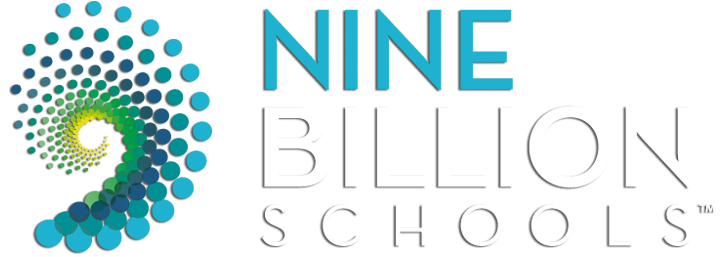9 Billion School’s: One School’s Journey – The Changing Role of Technology
By Dick Thomas
In our One School’s Journey blog series, I’ve shared how SHP leading Design is helping two Cincinnati-based, all-girls parochial high schools merge into a brand new institution called Mercy McAuley High School. Our role is to help the transition team determine what the new school will look like 10 years from now: curriculum to campus life, enrichment to internships, technology to teachers, student body to service. We’ve done that by leading a futurecasting exercise to imagine what the future may hold for Mercy McAuley, and what steps the school must take now to realize that future.
Part of the two-day futurecasting session included a presentation from futurist Brian David Johnson on the future of technology and its impact on education. It’s a topic we know is close to Brian’s heart; he actually wrote a 9 Billion Schools blog post on the topic, Education in the Age of Sentient Tools, and has a chapter on the topic in our forthcoming 9 Billion Schools book.
In short, the future of technology is sentient tools — tools that are aware, intelligent and social. This isn’t a far-fetched future, either. Brian predicts that we will enter an age of sentient tools within the next 10 years. His prediction is in line with research from PwC that indicates nearly 40 percent of jobs in the U.S. are at risk of being replaced by robots or artificial intelligence in the next 15 years. Already, the retail, automotive, logistics and foodservice industries have lost jobs to AI. And according to the website WillRobotsTakeMyJob.com, virtually no profession is immune to job loss due to automation.
It’s safe to say the pace of technological development really struck the Mercy McAuley transition team, many of whom remarked, “We knew this was coming but we didn’t know it would happen so soon.” We are moving towards a world in which our technology will recognize its own role in space and culture, have industrial-grade AI, and know each one of us personally. While such technological developments will impact employment and the skills needed in the workforce, naturally, it will impact education, too. This realization created a sense of urgency within the transition team as they realized it’s absolutely necessary to prepare students for this future.
Consider this: Students entering high school in the 2018-2019 school year, who also attend a four-year college, will enter the workforce in 2026, almost 10 years from now. That means they’ll be entering the workforce as sentient tools become a reality of daily life. What are we doing to prepare students for that future, especially one that’s emerging so quickly, it’s difficult to conceive?
The transition team agreed that we must radically change the way we train and educate the next generation of students to prepare them for a future with more advanced technology than we have now — and technology that’ll continue changing. We must help students learn to adapt, develop transferrable skills, and hone and apply uniquely human qualities.
Despite dystopian novels and science fiction movies, Brian does not believe sentient tools will replace humans. They can’t. Machines aren’t good at being human. So when people ask Brian how they can “future proof” their jobs, he always gives the same answer — be human.
That’s why the approach to education can’t be focused on specific skills designed to work with current technology. Teaching all high schoolers how to code when that type of coding may be obsolete in 20 years doesn’t help prepare them for an ever-changing future. But critical thinking and adaptability? Those skills will last a lifetime.
The mission of 9 Billion Schools is to encourage life-long, life-wide and life-deep learning far beyond our years of formal education. Our society is constantly in flux, and ground-breaking advances like sentient tools are going to significantly impact our labor force — what positions exist, who we hire and what skills we need. To thrive in that environment, we need a stronger emphasis on critical thinking skills, interpersonal development, transferrable skills, and a dedication to lifelong learning.
But don’t just take my word for it. In my next post for the One School’s Journey series, I’ll share what two high school students themselves said about personalized learning and the future of high school. I hope you’ll tune in.





